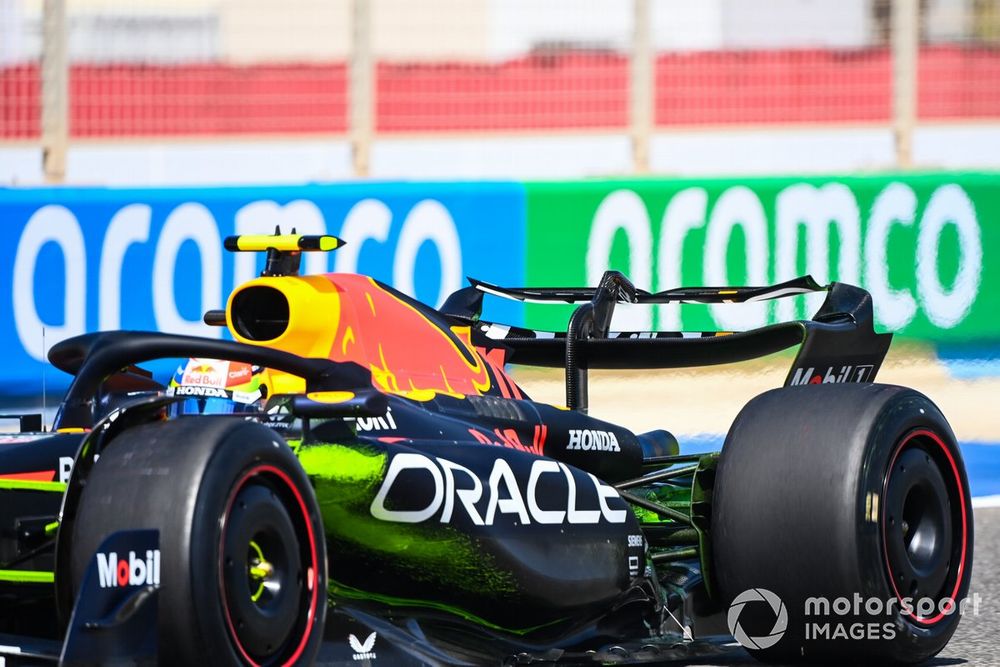Formula 1 teams use pre-season testing to extract as much data as possible via various methods – flow-visualisation paint and aerodynamic rakes included.
Both play a key role in every pre-season test – plus some free practice sessions – as a team attempts to learn more about its aerodynamic performance in preparation for the upcoming campaign.
This year is expected to be no different with F1’s 2024 pre-season test on the 21-23 February at Bahrain International Circuit, which also hosts the year’s opening grand prix on the 29 February – 2 March.
What is Flow-vis paint on an F1 car?
Flow-vis is the brightly coloured paint spread across an F1 car’s body part used in pre-season testing or a free practice session. The paint is formed by mixing a fluorescent powder with what’s usually paraffin oil and gets applied to a certain car part when a driver is set to leave the garage. Flow-vis could be applied to a car’s front wing, its sidepod or even all over, but it is especially useful when a new body part has been applied.
Some teams may use a fluorescent paint that can only be seen under an ultraviolet light so rivals cannot look at their data, while another way to do that is by covering the car as soon as it enters the pit-lane.
F1 teams must also be careful with how much flow-vis it applies because too much will cause puddles, whereas too little makes it hard for valuable data to be gathered.
Flow-vis is used to determine aerodynamic performance because, when a car is travelling at high speeds, the paint moves across the body in accordance with the airflow. This leaves lines as the paint begins to dry, meaning it is essentially a wind tunnel but with non-artificial air.
Sergio Perez, Red Bull Racing RB19, rear wing detail
Photo by: Mark Sutton
The lines which get left are incredibly important because they provide greater understanding into a car’s surface flow and the air’s direction, meaning teams can very clearly visualise the kind of structure that they have. So, for example, if flow-vis is applied to the bottom of the nose then lines usually appear further up showing how air has reacted to it and the direction the nose causes air to travel.
Once the car has returned to the garage, aerodynamicists will then take photographs before the flow-vis gets wiped off. What’s important is that the flow-vis lines are not usually visible to the naked eye and can only be analysed through…
Click Here to Read the Full Original Article at Autosport.com – Formula 1 – Stories…

